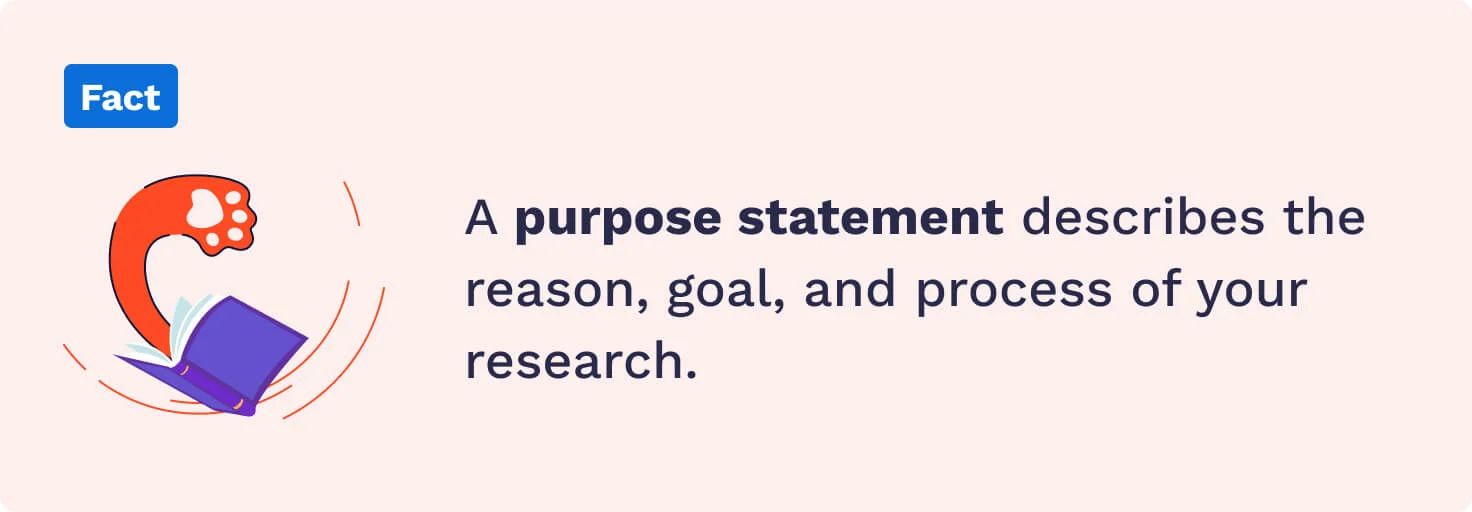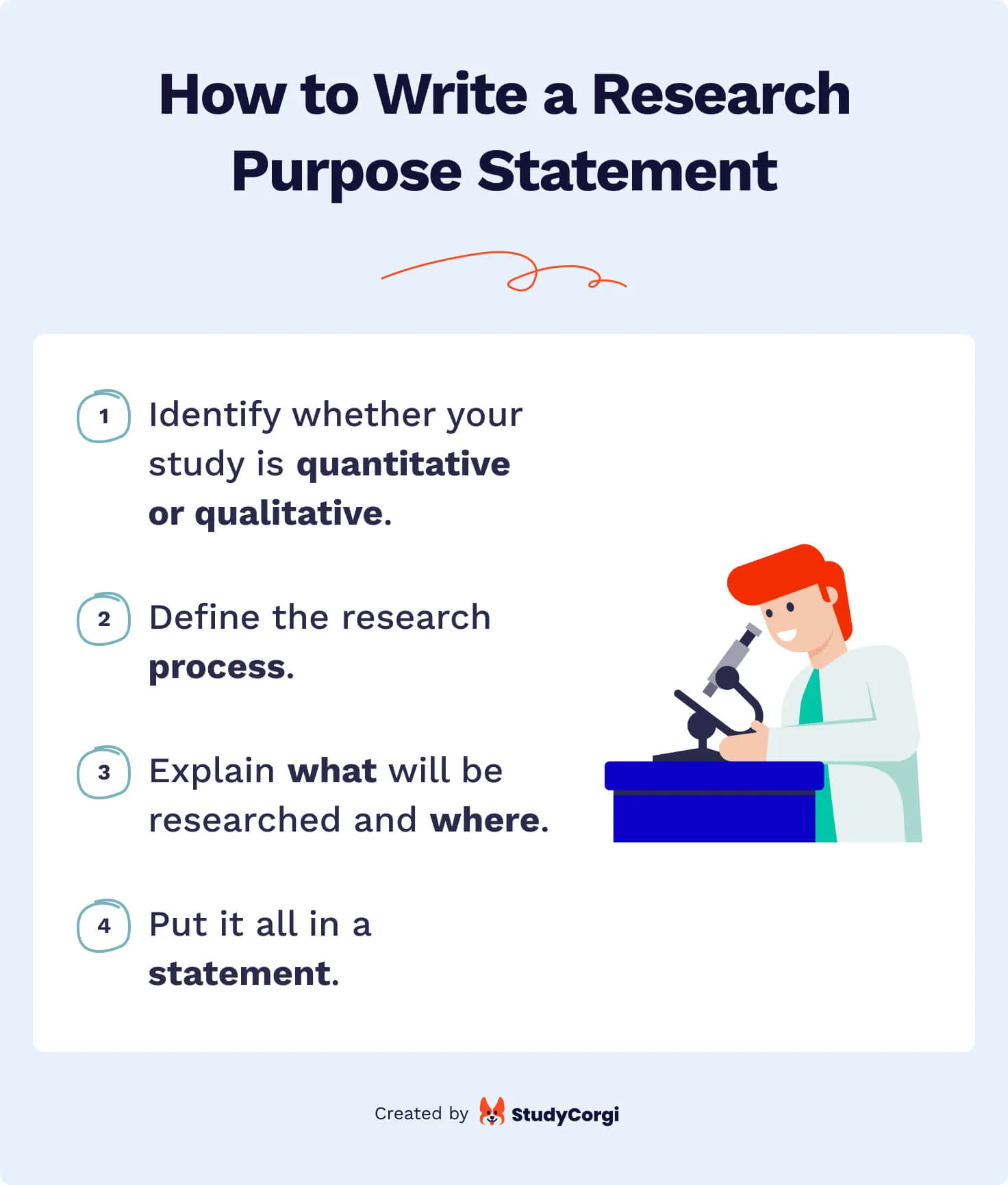✅ Research Purpose Statement Generator: How to Use
A research purpose statement is an essential part of any research. It helps you stay focused on the problem you’re investigating and also catches your reader’s attention.
However, it might take some time and energy to develop a solid purpose statement. Our goal is to make your studies more enjoyable with the help of our tool!
Here’s how our research purpose statement generator works:
- Choose the type of your research.
- Choose a verb that best describes your study’s purpose.
- Type in your research group, the object of your study, and what is impacted by it.
- Provide the information on the place and time of the research.
- Describe the research group 2 if necessary.
🔬 Research Purpose Statement: the Basics
Research Purpose Definition
A research purpose statement describes your research’s reason, goal, and process. It explains what the research explores, how it does it, and where it takes place. A research purpose is simple and concise. It is usually placed at the end of the introduction.

The Importance of Research Purpose Statement
A research purpose statement helps your reader understand what the research will be about and explains the significance of your study. It also helps you avoid distractions and focus on the relevant information needed for the research.
Research Purpose Statement vs. Thesis Statement
The purpose of both types of statements is to let readers know what to expect from your work. But here’s a difference:
- A thesis statement makes a claim and predicts how the essay will unfold.
- A purpose statement explains what the research will be about, how it will be conducted, and where it will take place.
🖊️ How to Write a Research Purpose Statement
Need to write your research purpose statement but don’t know where to start? We’ve got your back! Here, we explain step by step how to make a solid purpose statement for your research.
Step 1 – Identify Whether Your Study Is Quantitative or Qualitative
Research purpose statements vary depending on the type of research. One in a quantitative paper should focus on specific numbers. A qualitative research purpose statement focuses on precise intent. You can start your statement with, “The purpose of this qualitative/quantitative research is…”
Step 2 – Define the Research Process
Explain the methods you are going to use in your research. What data or instruments are you going to use? By explaining your research process, you will make it easier for the reader to understand what to expect from your work.
Step 3 – Explain What Will Be Researched and Where It Will Take Place
Try to provide enough background information for your reader. Where is the research going to take place? Does the reader need to know about the population of that location?
Step 4 – Make a Statement
Now, put everything together and create your statement.

💪 Tips on Making a Great Research Purpose Statement
- Write your research purpose statement together with the problem statement. This will ensure that the purpose is connected to the problem.
- Write only one purpose statement. Your purpose should cover the entire research, so there’s no need to divide it into smaller parts.
- Avoid including too many details. The purpose statement should be easy to understand. Otherwise, your reader might get lost.
- Use simple words. Don’t go overboard with creativity because it might distract you from the problem.
🤩 Research Purpose Statement Examples
Want some inspiration for your research purpose statement? Here are some of the best examples to help you out!
Quantitative research:
This quantitative research aims to compare the academic results of the students attending online classes and those attending traditional classes regarding exam scores and GPA.
The purpose above is short and clear. It lets the reader know what the research is going to be about.
Qualitative research:
The purpose of this qualitative research is to understand how mental health education impacts the academic achievements of high school students.
This purpose is also short and precise. It doesn’t have too many details but is straight to the point.
We hope this article was helpful. Remember that you can always use our research purpose statement generator for free. Make sure to check our APA title page generator and research question maker too!
Updated: